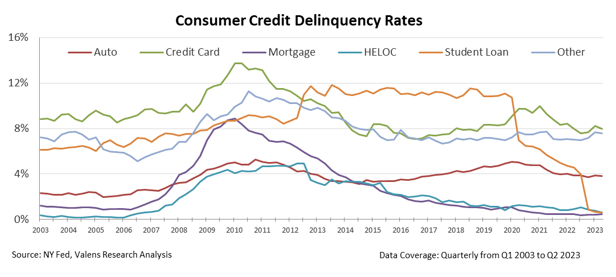Spending habits will have to change as the big loan crisis comes

Starting October 1st, almost 27 million borrowers will need to resume their monthly student loan payments.
The average borrower owes about $400 a month, which means many folks will have to make some tough budgeting choices.
People have not had to worry about student loans for the last three years, which means it will be an adjustment. Analysts now anticipate more households could fall behind on credit card and other loan payments.
Plus, this is also worrisome for retail businesses. As folks have to spend more on debt repayments, they’ll have less money for discretionary spending.
Things appear to be getting harder across the board. Both corporate credit constraints and investment and earnings expectations are getting worse.
Now with student loan forgiveness reversed, we’ll talk about how this added obligation might add stress to a developing group of troubles for the U.S. consumer.
Investor Essentials Daily:
The Monday Macro Report
Powered by Valens Research
For most of the pandemic, the U.S. has been finding ways to keep money in consumer pockets.
Stimulus and relief packages to families, small businesses, and industries kept spending strong, companies happy, employment high, and interest rates low. These are all the opposite of what would happen in a recession.
Consumer balance sheets were looking great, and the same was true for corporate credit.
From 2020 to 2022, almost every form of consumer credit saw declining delinquency rates. Actually, many of them trended toward historically low levels.
Student loan delinquency rates fell the most. They had been above 11% for most of the 2010s and dropped below 2% by late 2022.
Unfortunately, that trend couldn’t last forever. Things are getting tougher for borrowers, specifically those with student loans.
That’s why analysts forecast delinquencies to rise back to pre-pandemic levels.
Student loan payments being halted drove delinquency rates down. So, it makes logical sense that as those payments pick up, so too will delinquency rates.
This is going to put pressure on the entire economy. As we discussed, it’s likely to send other types of loan delinquencies higher, and it’s going to put pressure on retail businesses.
This is yet another catalyst to create more pressure on the U.S. consumer and consumer-facing businesses.
In the coming months, keep an eye on all kinds of consumer delinquency rates.
As they start rising, we’re likely to see credit issues worsen, and we may even see the retail landscape deteriorate. Those are all signs that we’re not out of the water yet.
Best regards,
Joel Litman & Rob Spivey
Chief Investment Strategist &
Director of Research
at Valens Research





